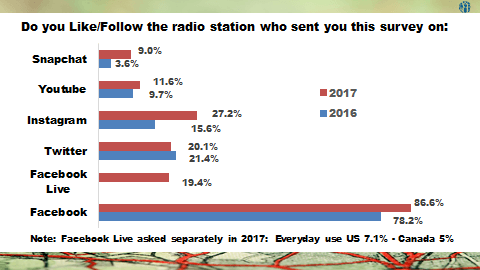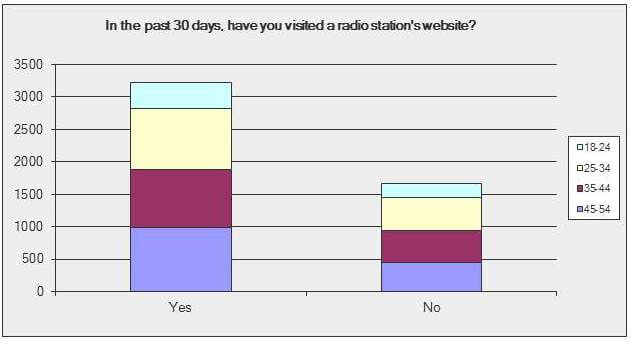- 09/18/2017
- Posted by: Mike O'Malley
- Category: homepages, radio programming, social media

We invest precious air time directing listeners to our station websites. “Sign up at…” and “Find out more at…” and so on.
But a pre-storm look at four South Florida stations’ websites in cities impacted by Irma points to Facebook rather than our websites as the platform that’s getting the most attention.
Checking on these stations’ Facebook pages off and on over a three day period (power permitting), there was a good amount of activity. All stations but one had posted something hurricane-related on Facebook in the past 60 minutes. Most posts contained useful information and/or links; some contained photos.
Homepages however were a different story.
Each of the four I checked had a Hurricane-related slider, but most simply linked to a television partner or to non-locally-generated news feeds.
Stations also posted Irma-related photos and links to other stories but again, unfortunately, none of the photos I clicked linked to content that was generated by the on-air staff (or, in nearly all cases, even the station).
One station’s homepage did have a photo with a link on how to help hurricane-impacted Floridians. Unfortunately (and embarrassingly) that information was for Hurricane Matthew which hit Florida last year.
Roadmap 2017 showed 87% of 18-54’s followed their favorite station on Facebook. Clearly this is big number.

But Roadmap also showed that nearly 2/3 of all 18-54s said they visited their favorite station’s website at least once in the past 30 days.

More than half of these respondents rated content about local events “very important.”
Accounts of the decline of the homepage vs. the rise of social aren’t new. However Forbes – using two years of NY Times homepage statistics – reported that at the end of 2015, despite homepage traffic declines, “overall page views at nytimes.com aren’t down; readers are simply arriving through a different entrance.”
This lends support to the conventional wisdom of using social media to have conversations and act as gateways for traffic to your website – where you own and control all the real estate and have a chance to generate some revenue.
Sure – it can be a lot easier to do a social media post, especially if your website’s backend is complicated or you don’t have direct access to it, or it can’t be updated on the fly via an app on your mobile device (which you can do on WordPress for example).
But if we’re going to continue to invest our precious on-air time to encourage listeners to visit our websites, we’ll need to have relevant, timely, continuously updated, original, shareable, and engaging content for our traffic when it gets there.
Read more on social vs. websites here.
Photo credit: Copyright: <a href=’https://www.123rf.com/profile_icetray’>icetray / 123RF Stock Photo</a>
